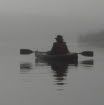Subscribe to:
Post Comments (Atom)
skip to main |
skip to sidebar

The gist of things here in my hometown, set within the arcs of things in the wider world, all from my uniquely biased point of view. Feel free to extend the horizons with your comments.
For quick impressions...
Clippings on the Fridge...
Checking the Post...
-
-
anti-fascist manifesto3 months ago
-
-
IT'S WORLD SPARROW DAY6 years ago
-
Dipping into the Stream #39 years ago
-
Another Reading List10 years ago
-
-
freemansgarden13 years ago
-
freemanstable13 years ago
-
Hey, I'm Still Around13 years ago
-
Thin Places13 years ago
-
Pre Trip Inspection Checklist13 years ago
-
Liam and the Big Foam Finger16 years ago
-
-
-
-
Local Interest Links
About Me

- arcolaura
- It's okay to be a little left-hearted ... as long as you're right in the head.
Continuing Interest
Blog Archive by Categories
- agriculture (6)
- Arcola (24)
- autobiography (6)
- birds (14)
- books (11)
- botany (3)
- building (2)
- cartoons (2)
- cats (7)
- climate (32)
- cooking (1)
- curling (7)
- direct use (7)
- drought (1)
- ecology (15)
- Eleutheros (6)
- energy conservation (14)
- enneagram (1)
- fog (1)
- food (4)
- footprint (3)
- fun stuff (6)
- gardening (30)
- golf (3)
- health (2)
- hills (7)
- homeschooling (1)
- how-to (8)
- insects (1)
- kids (4)
- labyrinth (6)
- lifestyle change (2)
- local sources (2)
- mammals (1)
- mandalas (3)
- maps (1)
- memes (1)
- music happenings (11)
- my favourite posts (40)
- oil industry (13)
- pictures (11)
- plants (2)
- poems (4)
- politics (2)
- prayers and sermons (8)
- public good (7)
- puzzles (1)
- quarrels (15)
- rain (13)
- refrigerators (4)
- root shift (1)
- science (3)
- seasons (9)
- seeking (22)
- series introduction (2)
- Series: Lake Arcola (2)
- snow (21)
- songs (18)
- storytelling (11)
- the creek (5)
- the farm (6)
- the sunroom (10)
- this blog (7)
- through my eyes (35)
- trees (2)
- tribute (2)




7 comments:
This is interesting!
Here's a link to a photo that I found fascinating: http://antwrp.gsfc.nasa.gov/apod/ap080922.html
I have a hill east of my house and I can approximate the date by the location of the sun at sunrise in reference to the hill.
Today we learn much that people in previous generations never learned. On the other side, people in earlier generations lived more intimately with the land and experienced things we only read about.
Hi Laura,
I just looked at it and it was time stamped 18:32 PDT. You can see most of the U.S., South America, Africa, and Europe and parts of the Middle East. Very interesting to see the dispersal of the lights throughout those continents.
If it was a contest, the NorthEast would win hands down
Tim
Paul - that is an intriguing photo. It reminds me of a couple of sun-angle related images that I can't locate right now. One is a reversing spiral, tighter at the ends, which was created (I think) by allowing a lens to focus sunlight on a board through the day and thus burn a track on it, and then repeating the process every day throughout a whole year, and then assembling all the curved tracks end to end. The other was a diagram of how the yin-yang symbol could be created (or at least approximated) by tracing where a shadow was cast by a post through the seasons.
Tim - Isn't that interesting? I assume the night lights are a static base map with the clouds superimposed from weather satellite imagery, and I don't know what they used to create the base map. I just recently discovered that you can view the world sunlight map in different map projections, so I chose the Peters projection for another subtle dose of reality.
Tim - here's another satellite image of Earth's city lights. It may be the same one that is used in the world sunlight map.
Laura,
That's a wonderful photo.
Re: "Originally designed to view clouds by moonlight, the OLS is also used to map the locations of permanent lights on the Earth’s surface."
I'm curious, do you think they are saying, e.g, that every night from 8 P.M. to 1 A.M. those are the lights that are on (including office buildings and homes) or are they saying that presumably the office building lights are left on all night?
Tim
I'm guessing it would be some sort of averaging of the light that is seen in the same locations over a series of nights at the times that the images are taken. I suppose a lot of it would be street lighting, yard lighting, that sort of thing, but it would be a mixture of many sources, and I assume the image resolution would be too low to distinguish much more than a general area of higher light level associated with an urban area.
Post a Comment